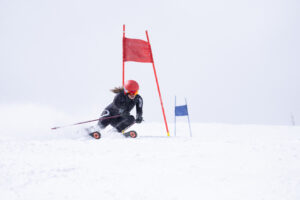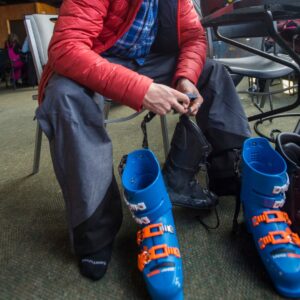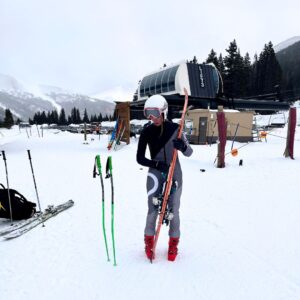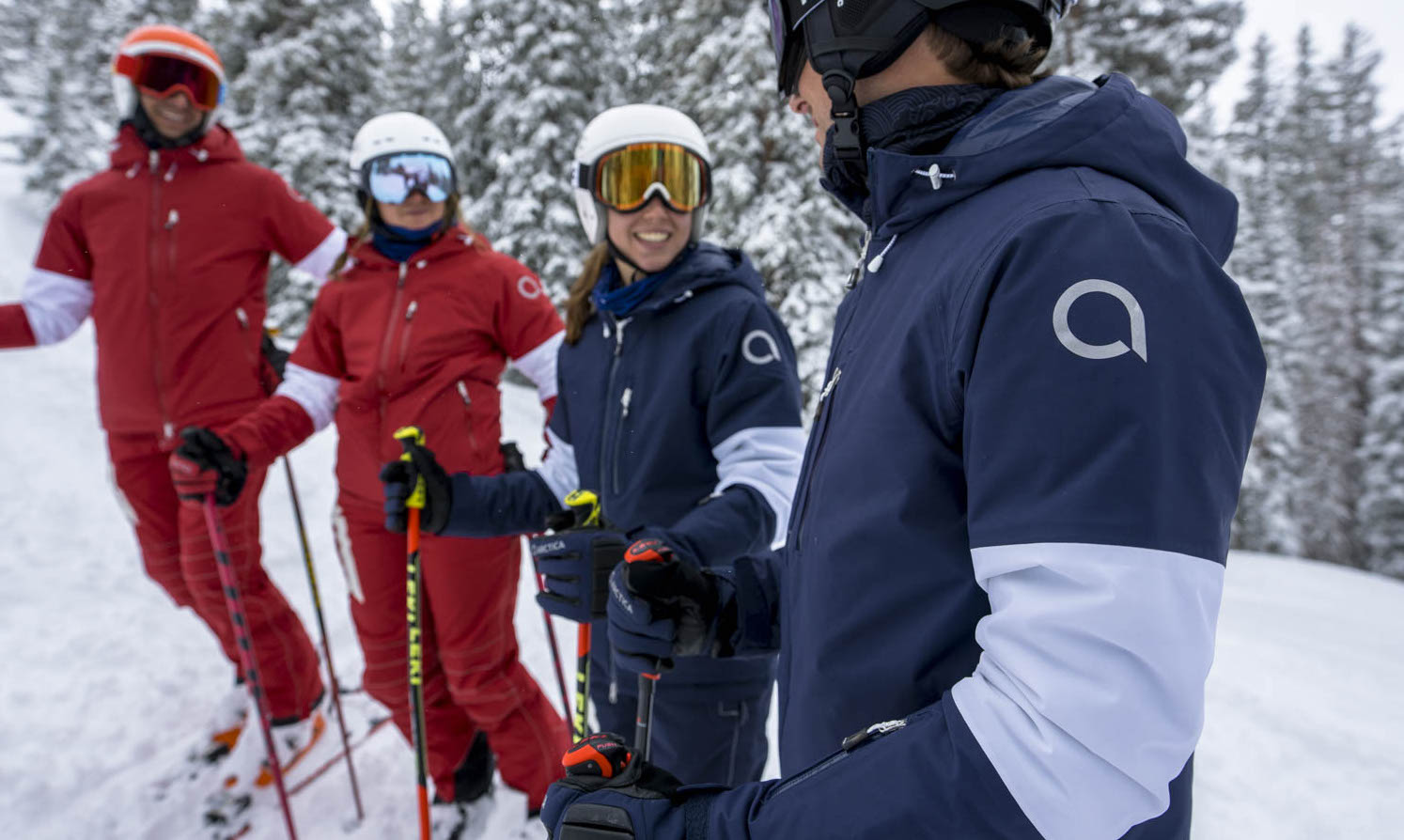Ski racing gear takes a beating. From slalom gates, swift temperature changes, wet/dry cycles (our Northwest ski racers know!), sun damage from lots of time outside, especially if you get to ski in the summer, and everything in between, your ski racing equipment faces numerous challenges. Over time, the wear and tear can raise questions about the lifespan of your ski racing gear. In this guide, we’ll explore the signs that it’s time to upgrade your ski racing equipment.
Skis
Skis are the obvious critical element of your ski racing gear. Factors such as proper care, frequency of usage, and the passage of time influence your ski’s lifespan. Estimates point to 150-200 days of use as a benchmark, but a well-cared-for ski can easily last longer.
Base Damage:
The bases of your skis are your primary point of contact with the snow. Ideally, friction between the base and the snow is as low as possible, which is why ski racing places such an emphasis on well-cared-for bases and waxing often. Scratches are often inevitable, and the good news is that they’re easily remedied. Surface-level scratches can be knocked out with a base grind, returning your ski to a pattern that repels water, thus reducing friction. Deeper scratches can be filled with P-Tex. Core shots and scratches that go all the way through the base material to the core of the ski are trickier. In the center of a ski, core shots can be filled with P-Tex. Core shots near or at a ski’s edge are tougher to fix and significantly impact a ski’s performance. We recommend having your local ski shop assess core shot damage.
Thin Edges:
Eventually, a well-loved ski runs out of edge material. When you sharpen your edges, you peel away a tiny layer of edge material. Eventually, that wanes down to nothing. If your edges look thin, your ski doesn’t have much life left. (PS. Taking care to sharpen your edges regularly actually helps to prolong life! If you let them get dull, you’ll need to take a lot more edge material off to get the edge sharp again.)
No Snap:
The wood core of your skis, responsible for that crucial snap that propels you between turns, will wear out over time. To test this, hold the tip of your ski with the tail on the ground and flex it. If it feels soft and slow to rebound, your ski’s performance is likely lacking.
Ski Boots
Ski boots play a pivotal role in transferring your power to the skis. Some experts say that ski boots are a more important piece of equipment than skis. And anyone who’s skied in an ill-fitting ski boot can attest.
Worn-Out Soles:
The toe and heel of your boots wear down over many steps across paved parking lots and base villages. This eventually causes problems with binding function. Your local ski boot fitter may have replaceable boot soles. Better yet, use cat tracks to prevent boot soles from wearing down.
Plastic Damage:
Ski boot plastic deteriorates over time due to UV damage and general wear. Any cracking means it’s time for new ski boots; be weary of any discoloration.
Reduced Power Transfer:
If your boot feels soft and fails to rebound when flexed, it isn’t transferring power like it used to.
Ski Race Suit
You know what they say: hundies matter. Your ski racing gs suit can significantly impact your aerodynamics and performance.
Rips and Tears:
Any sizable rips or tears, especially beyond the cuffs of the legs, may warrant a new suit.
Pilling:
The presence of pilling indicates wear and tear. Rough chairlift seats and contact with other gear in a travel bag (we’re looking at you, shin guards) can mar the surface of your race suit.
Arctica ski race suits are built to last. Made of NexGen, a highly durable three-layer polyester fabric, our race suit fabric is better suited for the everyday demands of ski racers.
Training shorts are a great investment to prolong the life of your ski race suit. Not only do training shorts help keep you warm, they protect your valuable ski racing suit from abrasive chairlifts and wear from gates or crashes.
Helmet
Any helmet that has taken an impact in a crash should be replaced. Helmets are made of a dense foam surrounded by a plastic shell. That dense foam is meant to protect you by compressing on impact, reducing the energy transferred to your head. Unfortunately, there’s no way for that foam to rebound, so its ability to absorb future impacts is greatly diminished. Many helmet companies offer discounts to replace a damaged helmet, like this one from Smith.
Goggles
You’ll probably know when it’s time to replace your goggles. If the lenses are scratched to a point that it interferes with your vision, you should replace the lenses. You need to be able to see to be able to ski well!
We love the idea that the skier makes the gear, the gear doesn’t make the skier — meaning you could buy the most expensive everything, but if your ski skills aren’t up to par, the gear won’t do anything for you. However, bad and worn-out gear limits a skier’s potential. If you’re seeking optimal performance on the ski hill, make sure your ski racing gear is up to the task. When you replace worn-out ski gear, look for high-quality items, like Arctica ski racing suits, with fabric and features built to last.








Leave a Comment
You must be logged in to post a comment.